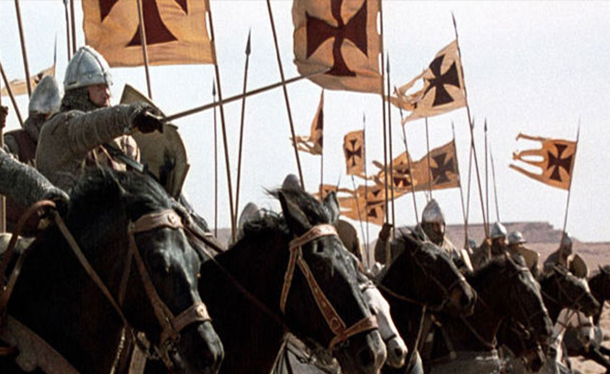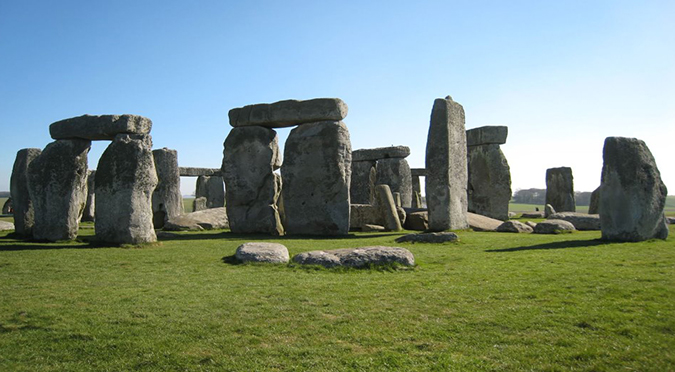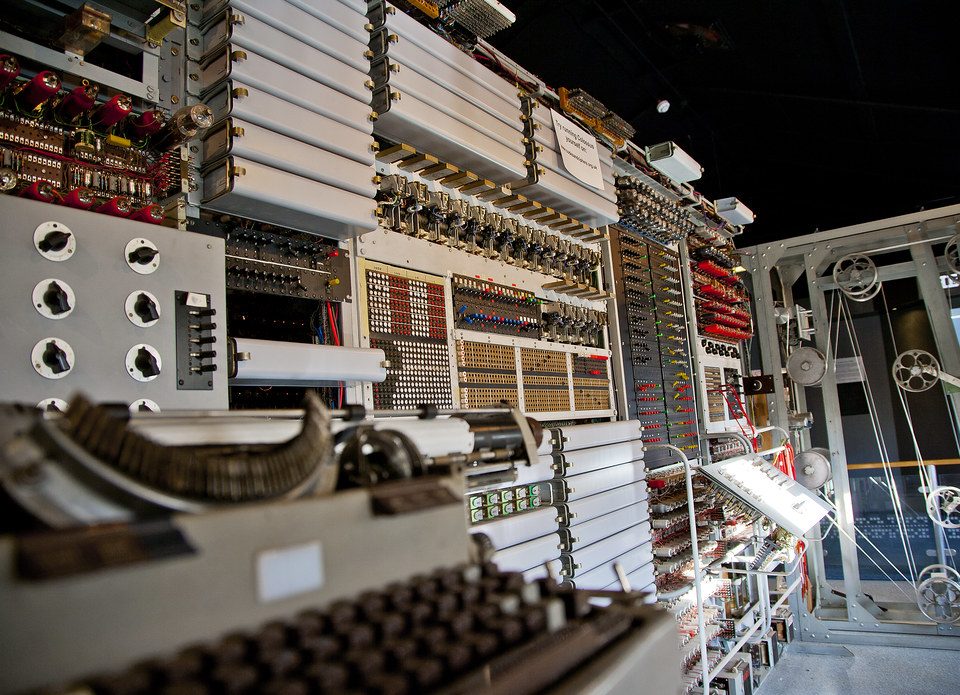
BLOCKBUSTER, BORDERS, and BANKRUPTCY
November 12, 2013
THE CRUSADES – Part One
December 13, 2013 Previously on an architectural edition of “EPiK FAILs” we covered ‘The Seven Ancient Wonders of the World’, 6 of which no longer exist for various reasons (with the notable exception being the Great Pyramids of Giza). So after traversing those ruins of legend, this time I figured I’d give a grand tour of historic monuments that you can actually visit today!
Previously on an architectural edition of “EPiK FAILs” we covered ‘The Seven Ancient Wonders of the World’, 6 of which no longer exist for various reasons (with the notable exception being the Great Pyramids of Giza). So after traversing those ruins of legend, this time I figured I’d give a grand tour of historic monuments that you can actually visit today!
As I mentioned previously, there are more than just Seven Wonders of the World, in fact there are several lists, including modern architecture, natural phenomenon, and even galactic tourist traps (black hole joke?). A couple years back there was a world-wide vote for the new official list with candidates from all around the globe. However, instead of breaking down one of those previously mentioned lists, I’ve decided to compile my own list of sights worth seeing, with a funny bit of trivia behind each of these magnificent structures that have stood the test of time, mostly…
1. Stonehenge (Wiltshire, England, UK)

Seriously, what’s the deal with Stonehenge?!
Stonehenge is essentially a pile of massive boulders arranged in a circle in the middle of an open field. This truly ancient monument was ‘constructed’ between 3100 BCE and 1600 BCE! The most impressive feature about this mysterious henge of stones is that some of the stones weigh up to 50 tons! Furthermore, the enormous stone blocks of Stonehenge were actually dragged 160 miles from Wales by the Neolithic Druids! (They must’ve had some time on their hands back then.)

There are a few theories about the meaning behind Stonehenge, after all a couple of stone age dudes didn’t spend years of hard labor slapping it together for nothing. Some of the more outlandish ‘theories’ range from aliens to Merlin. However, the most credible source came in 1965 from astronomer Gerald Hawkins. His hypothesis was that the random cluster of stones was actually a calendar of sorts, seeing as the different points of the circular arrangement coincided with astrological phenomenon, and seasonal changes.
Stonehenge also served a secondary purpose, as a ceremonial burial site for the dead, seeing as archaeologists have found numerous skeletal remains buried there. Archaeologists believe that the site originally included wooden structures, and was honored as a place of worship. However, many aspects of this stone age structure remain under scrutiny by both conspiracy theorists and historians alike. In the words of Ylvis, “Who the fuck builds a stonehenge?”
2. The Parthenon (Athens, Greece)

Ever wonder why the Parthenon looks like such a catastrophic mess? Well it’s not just because it’s ancient. (Which it clearly is.)
You see, the Greek temple was built as a shrine to the Olympian gods, during the reconstruction of Athens following the Persian wars (aprox 480 BCE). During its occupation by the Ottoman Turks it became a mosque (in the 1460’s). In 1687 the Venetians led an assault on the Ottoman controlled Athens. The Turks decided to store ALL their gun powder within the ancient Acropolis, figuring that the Venetians wouldn’t risk destroying such a historical landmark. They chose …poorly.
As soon as the Venetians discovered that all their ammunition were stored in one convenient place they immediately targeted the 2,000 year-old structure with everything they had. Naturally the ridiculous amount of explosive ammunition did what it does best. The resulting firebomb not only decimated the marble building, effectively blowing the roof to pieces, but the stone-shrapnel-laced-explosion killed over three hundred Turkish defenders, and burned down countless homes. FAIL
3. THE Colosseum (Rome, Italy)

The Roman Colosseum wasn’t just the greatest engineering feat of the Roman Empire, it’s still considered the largest amphitheater in the world! It was constructed during the Flavian dynasty between 70-96 CE under the Emperors: Vespasian, Titus, and Domitian. This colossal undertaking was built over the ruins of the psychotic Emperor Nero’s old palace, the Domus Aurea (which was built over the ruins of Rome itself, which Nero burned down). The Colosseum gained its name from the gigantic gold statue of Nero at its entrance. (Read more about NERO here!)
 This arena was the forerunner of the modern football stadium, the main difference being that the spectator sport used to be gladiatorial fights to the death. The Colosseum could hold about 50,000 blood thirsty fans back in its heyday. The amphitheater had a series of underground tunnels built into it complete with holding areas and trap doors, originally hidden underneath the stage, covered by wooden panels and sand, which have since been left exposed to the elements for the past few centuries. The Roman Colosseum was used for a variety of events including speeches, poem recitals, plays based on mythology, mock-battles, and of course the notorious gladiator games.
This arena was the forerunner of the modern football stadium, the main difference being that the spectator sport used to be gladiatorial fights to the death. The Colosseum could hold about 50,000 blood thirsty fans back in its heyday. The amphitheater had a series of underground tunnels built into it complete with holding areas and trap doors, originally hidden underneath the stage, covered by wooden panels and sand, which have since been left exposed to the elements for the past few centuries. The Roman Colosseum was used for a variety of events including speeches, poem recitals, plays based on mythology, mock-battles, and of course the notorious gladiator games.
Gladiator games were a national past time during the Roman Empire. It was a free attraction for the people, to distract them from their day to day troubles. The craze over Roman gladiators would easily outshine Beatlemania, and Pokemonia combined. People didn’t just place bets on their favorite gladiators, they collected memorabilia, signed togas, and clay action figures. Not to mention the gladiator groupies.
 However, none were more obsessed with these barbaric games than Emperor Commodus (161-192), the son of Marcus Aurelius, who fancied himself the reincarnation of Hercules. The self-indulgent Commodus would often slaughter exotic animals for his own amusement, and ‘fight’ loyal slaves, soldiers, and gladiators in the Colosseum, sometimes naked. Eventually the Roman Senate had enough of his crazy shenanigans, and had him assassinated by the gladiator Narcissus, his personal trainer.
However, none were more obsessed with these barbaric games than Emperor Commodus (161-192), the son of Marcus Aurelius, who fancied himself the reincarnation of Hercules. The self-indulgent Commodus would often slaughter exotic animals for his own amusement, and ‘fight’ loyal slaves, soldiers, and gladiators in the Colosseum, sometimes naked. Eventually the Roman Senate had enough of his crazy shenanigans, and had him assassinated by the gladiator Narcissus, his personal trainer.
Today the Colosseum lies in ruins, a mere shadow of its former glory thanks to a combination of earthquakes and stone thieves (the lowest of the low), but even so it’s a spectacular sight to behold!

The Colosseum! …or what’s left…
4. The Great Wall of China
 The Great Wall of China was first constructed between 220-206 by the First Emperor of China, Qin Shi Huangdi, a paranoid nutjob, and was greatly elaborated on throughout the Ming Dynasty. During construction under Qin Shi Huangdi’s totalitarian reign, thousands of slaves were rounded up into labor camps where they often worked themselves to death building the Wall brick by brick. Many who died actually became a part of the wall’s foundation… Throughout its long history, the Great Wall has served as both a fortification against invading armies, and a passageway for travelers and traders on the silk road. Since then sections of the excruciatingly long path have succumbed to vandalism, graffiti, and in some cases even bulldozed for construction purposes. Perhaps the Great Wall’s most impressive feature is its inconceivable length: 5,500 miles! (8,850 km). Unfortunately that doesn’t mean you can see it from space.
The Great Wall of China was first constructed between 220-206 by the First Emperor of China, Qin Shi Huangdi, a paranoid nutjob, and was greatly elaborated on throughout the Ming Dynasty. During construction under Qin Shi Huangdi’s totalitarian reign, thousands of slaves were rounded up into labor camps where they often worked themselves to death building the Wall brick by brick. Many who died actually became a part of the wall’s foundation… Throughout its long history, the Great Wall has served as both a fortification against invading armies, and a passageway for travelers and traders on the silk road. Since then sections of the excruciatingly long path have succumbed to vandalism, graffiti, and in some cases even bulldozed for construction purposes. Perhaps the Great Wall’s most impressive feature is its inconceivable length: 5,500 miles! (8,850 km). Unfortunately that doesn’t mean you can see it from space.
 5. Leaning Tower of Pissa (Pisa, Italy)
5. Leaning Tower of Pissa (Pisa, Italy)
The reason this one’s on the list, is because it’s a wonder it’s still standing! The Leaning Tower of Pisa is a Roman Catholic Cathedral’s bell tower in the Italian city of Pisa that just so happens to be listing at a dangerous angle. The seven story tower’s notorious tilt began immediately during construction in 1173 due to an inherent design flaw. The bell tower was built on weak soil, and began to gradually sink. Construction was then halted for a hundred years or so during a series of military engagements, unintentionally giving the tower time to settle into the unstable foundation, otherwise it would’ve toppled long ago. The tower was finally finished in 1372, and has been slowly teetering over threatening to crush unsuspecting tourists in a disaster movie by Michael Bay. In 1964 efforts were finally made to keep the Leaning Tower from toppling. Precautions were taken over the next few decades including lead counter weights and removal of soil underneath to partially stabilize the tower, for now…
6. The Moai Statues of Easter Island

The Moai are 887 gigantic statues carved from volcanic rock, with enormous heads and features created by the Rapa Nui people, found all across the Chilean Polynesian island known as Easter Island. As tall as ten meters and as heavy as 86 tons, these stone heads are said to be representative of their fallen ancestors watching over them. Constructed between 1200 and 1500 CE, the monolithic figures would eventually spell doom for their creators. During the centuries of massive head statue building, the tribes cut down every last tree on the entire island. This became problematic seeing as they no longer could create canoes to go fishing, or leave the island. Then their crops began to fail. People began to starve, tribal leaders lost their power, and the clans began to tear each others’ statues down as chaos spread throughout Easter Island. Their civilization began to implode on itself until slave traders stopped by and took advantage of the situation in 1862. The sparse population that remained behind was then indoctrinated by Catholic missionaries, thus the mysterious culture of the Rapa Nui was lost forever…
7. Taj Mahal (Agra, Uttar Pradesh, India)

The Taj Mahal is an incredibly large, blinding white mausoleum with uncanny symmetry and unparalleled beauty. The domed palace was commissioned by the Mughal Emperor Shah Jahan, built between 1632 and 1653, in memory of the Indian Emperor’s third wife, Mumtaz Mahal, a Persian Princess. The tomb was constructed with a fusion of Muslim and Indian architectural styles, complete with calligraphy, murals, lapis lazuli, and precious stones. Soon after the Taj’s completion, Shah Jahan was dethroned by his bastard son, Aurangzeb. He was buried next to his beloved wife within the monumental mausoleum. Then during the (failed) Indian rebellion of 1857 against the British Empire, the Taj Mahal was defaced by British soldiers. Viceroy Lord Curzon later ordered a full-scale restoration project to repair the badly damaged historic landmark.
8. Burj Khalifa (Dubai, UAE)

The Eiffel Tower of Paris (1,063 feet – circa 1889), New York’s Empire State Building (1,454 feet – circa 1929), and the Shanghai World Financial Center (1,614 feet – circa 1997) all have one thing in common: they were all once the tallest skyscrapers in the world! In addition, at one time or another, they’ve each been considered for the honorary title of ‘Wonder of the World’. That is until bigger and badder contenders knocked them each down a rung, and stole their championship title. This has actually gone on several times over the last decade alone. However, when the construction dust settled in 2009 (after five long years), there was only one building at the top of the list, one architectural giant towering over the rest, one tower to rule them all: The Burj Khalifa!
The Burj is a massive skyscraper overlooking Dubai. Standing at an inconceivable 2,722 feet! (829.8 meters!?), nearly twice the height of the former Twin Towers, with a grand total of 211 floors, and an absurd construction cost of $1.5 billion!! This spectacular monument to man’s hubris broke a number of records, boasting the world’s highest: residential space, restaurant, night club, swimming pool, and fireworks display! The Burj Khalifa was also recently featured in the latest Mission Impossible film, ‘Ghost Protocol’. If it’s good enough for Tom Cruise it’s good enough for King Kong. Dubai’s enormous Tower of Babel-wannabee is a testament to mankind’s need to constantly outshine itself… well at least for the next couple years, until another crazy architect gets a hard on for poking the atmosphere with a giant metal penis sculpture…

Honorable mentions: The Statue of Liberty (New York), The Golden Gate Bridge (San Francisco, California – USA), Big Ben (London, UK), The Christ the Redeemer Statue (Rio de Janeiro, Brazil), Petra (Jordan), Chichen Itza (Yucatán, Mexico), Machu Pichu (Peru), and of course, my personal favorite: the architectural blunder known as The Bent Pyramid of Egypt!

Liberty: the color of rusted copper…
Erik Slader
 Hope you enjoyed this edition of “Epik Fails!”, if you have any comments, questions, concerns, or suggestions let me know in the comments below! Also, be sure to ‘Like’ EPiK FAILs on Facebook! (www.Facebook.com/EpikFails), and SHARE IT with your friends!
Hope you enjoyed this edition of “Epik Fails!”, if you have any comments, questions, concerns, or suggestions let me know in the comments below! Also, be sure to ‘Like’ EPiK FAILs on Facebook! (www.Facebook.com/EpikFails), and SHARE IT with your friends!
—————————– > Click for a Complete List of Essays on Historical Failure!!
— Sources:
http://www.english-heritage.org.uk/daysout/properties/stonehenge/history-and-research/
http://academic.reed.edu/humanities/110tech/parthenon.html
http://www.travelchinaguide.com/china_great_wall/
http://whc.unesco.org/en/list/252
http://www.pbs.org/wgbh/nova/easter/civilization/giants.html
http://skyscrapercenter.com/dubai/burj-khalifa





5 Comments
[…] To be continued in 8 MORE WONDERS OF THE WORLD… […]
Hey, Erik. First, I really dig your work on Epik Fails! On Stonehenge, you cite that Druids dragged the stones. Assuming building began approximately 3100 BC and ended 1600 BC, and Druids sprang from Celtic society post 300 BC, wouldn’t that be problematic? BTW, so cool a friend posted a pic of a fox card and asked if the words were Norwegian. I found Ylvis. Posted and bang, you posted and full circle back to you and Epik Fails. Something cosmic going on… 🙂
Yeah, might have to fix that… Thanks for the feedback!! 😀
There’s plenty more where that came from, I’ll be posting about the Crusades this month, so stay tuned 😉
Cool! Thanks, Erik;)
[…] 8 More Wonders of the World […]